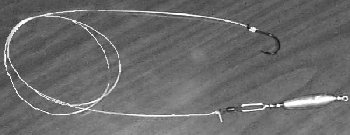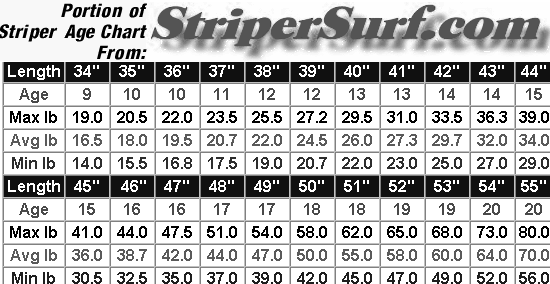Striped Bass Season
Fishing on the southern NJ coast
Q: Why should I go Striper fishing?
This is a great question and the answer is a little different for everyone. First, just take the act of fishing. Being out in the boat or on the beach is half the game. You should remember to enjoy the day on the water, whether you catch fish or not. The answer becomes very clear when the thrill of that beautiful silver and black Bass slips pass the boat just out of the reach of your good friend who is holding the net. All friendship hangs on a thin thread as last few seconds pass and the fish is landed or knocked away by a bad stab with the net. A few friends have been very close to going swimming after a lost Bass.
Q:What kind of bait should I use?
Mullet, Clams, Bloodworms, Live Eels, Bunker, Herring. Very generally, chunked baits of Herring and Bunker, whole Mullet and Clams and Bloodworms work best when fished at anchor or from the land, bridge or surf. Eels catch Bass when they are drifted either by boat or floated with the tide along a bank or jetty. Stripers will eat just about anything and each bait has a best time and place to be used. Eels are the best choice of bait for Fall Striped Bass fishing in Little Egg Inlet. I will ramble on a bit about all the questions that I have repeatedly heard about eels.
Q:How do I buy eels?
First, you have to figure out how long you plan on fishing and how many people are going. Most anglers purchase a dozen Eels to be safe and not run out. Eels can become casualties to Bluefish, Dog Sharks and mis-haps like squirmin out of your hand and flying over the side of the boat or slithering lightning fast through the tiny scupper hole in the stern of the boat. We supply a zip-loc bag and seal the Eels for travel. If you bring in a bucket, we will dump the eels in it for safer travel. Leave the Eels in the bucket with just a touch of water to keep them damp, or transfer them into one of your minnow bucket. If you don't have a minnow keeper leave the eels in a pail. Damp, cool eels will live for days. Too much water in the bucket and they will drown. Not enough water, they dry up. Sun and heat are no good either.
Q:Where do the Eels come from?
I buy the Eels from several baymen who work hundreds of Eel pots along the Delaware River. One of the Baymen I visit works down near the Cape May Ferry and another works his pots in the Salem New Jersey area. Nope, I do not catch all of them in my back lagoon.
Q:Can I catch eels in my lagoon?
Yup. But, probably not too many. A regular minnow trap will work. The best bait is horseshoe crab. Crushed Blueclaw or Green crabs will work too. Most people throw some kind of meat or fish product in the trap, like chicken bones and Bunker fish.
Q: I caught a few Eels/I have a Eels left over, how do I keep them?
Stick 'em in your minnow bucket. Make sure you strap the door closed with a little bungie or secure it in some manner that the Eels can't squirm out or critters like Otters can't get in. Plug the ends of your minnow trap or squeese the openings closed and adjust the tabs on the trap to make the ends seat tight together. A big Eel will squeese through a little gap.
Q:How do I hook Eels?
Easiest method is through both lips like you would a minnow. Another popular method is to place the hook in the mouth and come out an eye socket forward of the eye. You will need something to grab the slimy Eels with. A dry towel works the best. Newspapers and papertowels will also work. Calming the Eels down with ice is recommemded, but there is a happy medium between slow/cold, and frozen to death.

Q:What is a good hook to use?
I am not sure how it came about, but there are a few common type hooks to use and the size is in a 4/0 or 5/0. Mustad 92553BL, and Gamakatsu 02414 and 02415 have become the standard out of my store. The hooks are black, short shank and off-set. Four foot leaders of 30 pound test do the job just fine. A few anglers like longer leaders, about six feet in length. This length makes it very difficult for one angler to be able to net his own fish.
Q:How heavy of a weight should I use?
That answer depends on your drifting speed and water depth. Most of the time, the 1 ounce bead trolling weight/inline trolling sinkers do the job. Upgrade to heavier weights when the wind blows harder. The bead chain trolling weights are the most sucessful at preventing line twist when drifting Eels.
Q:Where is the hot spot?
This week it was in Little Egg Inlet, drifting the eels along the bars where shallow water meets the deep. These areas are where Bass like to hang out. Along the 'G' buoy, and the area along Tuckers Island and the Northernmost end of Little Beach were also active this week. Weakfish and Stripers lie in the same areas. If you have a favorite Weakfish spot, it surely is worth a try for Stripers.
Q:What type of rod and reel should I use?
A combo that has about 15 to 20 pound line class is just fine. Spinning or conventional reel...angler's preference.
Q:What is the largest Striper weighed in this Fall so far?
Each year, we see a half a dozen fish from 45 to 52 pounds.
Q:How big is a 50 pound Striper?
A Bass goes 50 pounds and 50 inches right about the same time. The average Striper weighed in at the store is between 15 and 20 pounds. The smaller fish are the better for eating. Throw some of the big ones back and keep the 28" to 30" fish. They are more tender and sweeter tasting fish.
Q:What's the New Jersey Limit?
See the link for NJ regulations. Three miles and further offshore is Federal water restrictions and no Bass may be kept.
Q:What should the water temperature be?
Stripers love a water temperature around 55 degrees..plus or minus 5 degrees. As more and more Stripers are around, they are spending all year round in the Mullica River. That means that the temperature isn't as much a factor as it used to be.
Q:When is the best time to go Bass fishing?
Morning or evening fishing and other periods of low light conditions like cloudy and rainy days usually are the best times. This past week, all that hasn't mattered. Stripers have been active in the Little Egg Inlet both in the daytime and night on the outgoing tides. There has been very little action on Stripers during the incoming tide.
